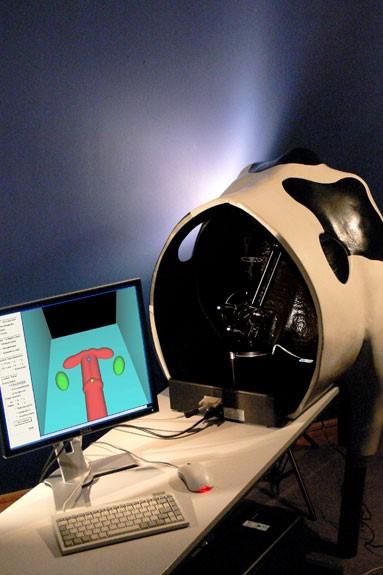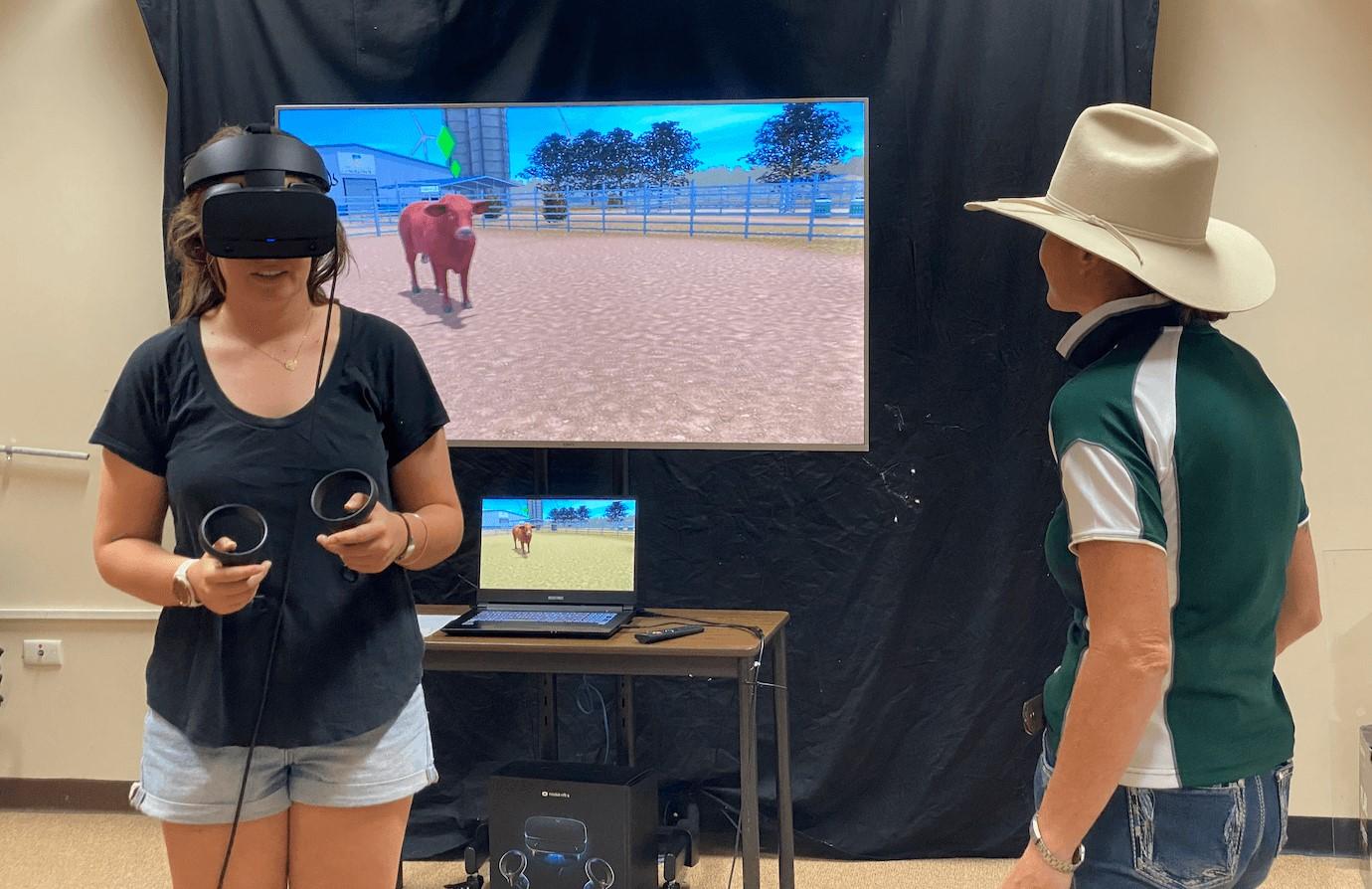Innovations Prepare Students for Close Encounters
Mixed reality technology has become more accessible for students at the Roseworthy Campus within the last 12 months with the introduction of a Virtual Reality (VR) cattle handling experience and haptic technology featuring a cow and a horse.
‘The VR cattle handling experience is the only one of its kind in the world and the haptic technology is the only one in Australia’, according to Dr Mandi Carr, Large Animal Clinician and Lecturer at the School of Animal and Veterinary Sciences.

VR Cattle Handling
All first year students enrolled in the four degrees offered at Roseworthy will have a virtual cattle handling experience prior to undertaking live cattle practicals.
‘The VR cattle handling experience is designed to help students feel more comfortable around cattle, experience the size of cattle and how they move so that in the paddock or in the yards they can move real cattle confidently and in a safe way' explains Dr Carr.
The students learn about flight zones (the personal space or comfort zone) of an animal and that when they encroach into that flight zone, the animal moves away. Using the flight zone, they can move animals in a certain direction and even safely move an animal away from others in the mob. The live cattle practical builds on the VR experience by putting into practice what they have learned.

Haptic Technology
The Haptic Cow allows students to carry out a virtual examination of a cow’s internal reproductive system using a touch – feedback device that mimics the feeling of bovine anatomy in the real world. The Haptic Horse provides a virtual examination of the abdomen of the horse, and mimics the feeling of equine anatomy in simple to advanced colic presentations. Students reach inside a fibreglass shell and connect to a robotic arm. Students can see simplified structures on a screen which match to what they feel in the simulator. Teachers can then provide instruction and feedback while watching the student’s hand movements inside the animal on the screen.
‘Students often struggle with the feeling of firm vs soft, hard vs firm, explains Dr Carr. ‘The haptic technology provides the ability to simulate these feelings prior to using live animals, enhancing the students experience in the live animal’.
Students also struggle with the subtle physical techniques required for pregnancy testing and colic examinations in horses when the wrong technique can cause serious harm and significant welfare concerns. Having the ability to simulate the correct amount of force to be used should lead to an improved technique in the live animal.
It is difficult to teach procedures when students do not have any visual cues to accompany the teacher’s step by step description. In turn, the teacher cannot see what the student is doing and is reliant on their description, so providing effective guidance and feedback is difficult. The Haptic technology addresses these issues.
Dr Carr says that haptic cow is currently used in the Bachelor of Animal Science program (Animal Reproduction) and the Doctor of Veterinary Medicine program (DVM 1,2 and 3) and will be introduced into the Bachelor of Veterinary Technology program this year (second year students). The haptic horse is utilised in the DVM 3 equine clinical rotation.

Teaching innovations lead to positive outcomes
Dr Carr reports that students find both the experiences ‘pretty cool’ and that they give them a better understanding of cattle behaviour, and what to expect to feel when performing rectal palpations on cattle and horses. ‘It is common to hear "oh, that’s what I am supposed to be feeling” when using the haptic technology’, she says.
From a teaching perspective, student behaviour around live cattle has improved considerably. There is a clear positive correlation between what is experienced in the VR environment to what is showcased in the live animal practicals. ‘Many of the students have very little to no prior cattle handling experience’, Dr Carr explains, ‘So it has been particularly pleasing to see the ‘fear’ decrease and the confidence increase when the live animals are in front of them’.
With the haptic technology, the ability to find internal structures via rectal palpation on a cow has increased and the ability to pregnancy test correctly has improved. Students that rectally examine a horse with colic have improved their diagnostic skills using the haptic technology and have been more confident with their technique.
Whilst it is early days utilising the technology, the student experience has been positive with a definite increase in student engagement during the practicals when the technology is used. And Dr Carr shares that because it is really cool technology to play with, the teachers have a bucket-load of fun teaching with it too.

